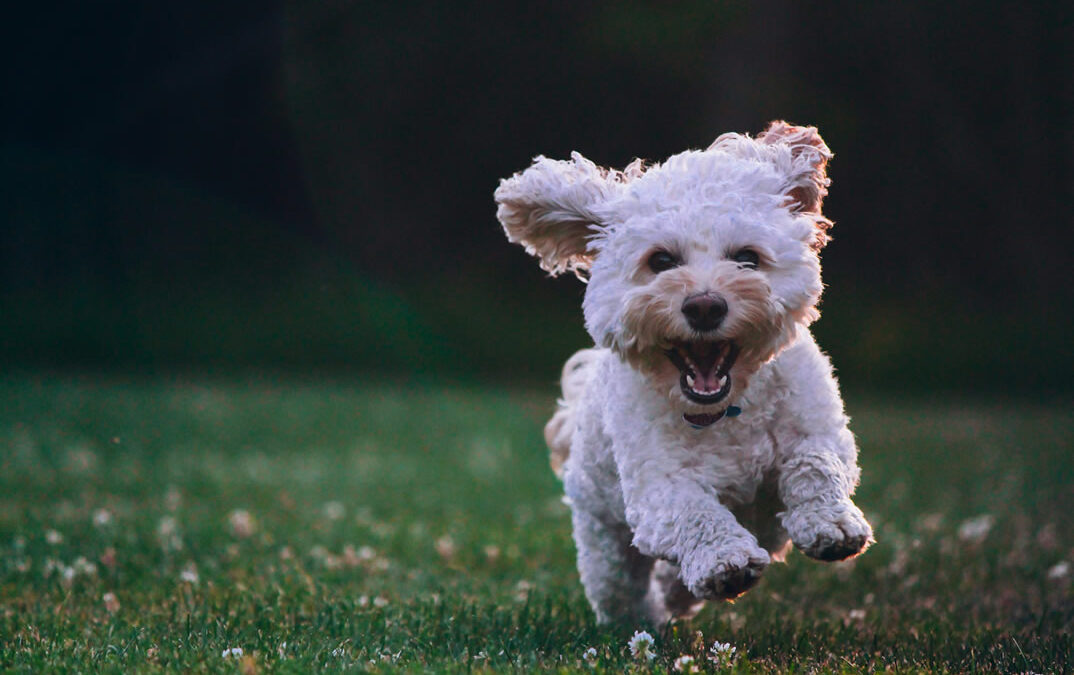Pets playing on the lawn is a lovely sight. However, there could be hidden hazards that endanger your furry friend. MowTown Blades has shared a primer to help you find these dangers. We’ve also shared ways to make your lawn more pet-friendly. These strategies include using pet-safe lawn fertilizer and keeping grasses within optimal height. Let’s dive in!
Pets Are Often Not the Priority in Lawn Care
Many homeowners don’t take pets into account when it comes to lawn care. It’s understandable. We’re more focused on creating beautiful outdoors and maintaining the vegetation and other elements. However, we’re not the only ones who interact with lawns — our pets do, too. It’s important to keep them in mind because you may be inadvertently using harmful chemicals in your lawn care. Remember, what’s harmless to humans can be harmful to your pets.
By removing these hazards, we can ensure that playtime is safe. Pets can run around without you worrying about them getting poisoned, injured, or worse.
Various Hazards a Pet May Encounter on Your Lawn
Most types of hazards in your lawn are unseen, and some only manifest their effects after extended periods. Knowing what to watch out for will help you become more proactive and eliminate the dangers before they can harm your pet.
Plants
Many of the plants that we consider ornamental are actually poisonous to pets. For example, daffodils — as pretty as they look — contain a toxin called lycorine. This compound causes severe vomiting, which leads to dehydration and other side effects. Colchicine, found in most crocus varieties, is also poisonous and may result in death.
Another way that plants can harm your pet is with their thorns. If you have a pet that loves to explore, avoid planting bushes with spines or spikes. These defense features can seriously injure your pet, with the wounds possibly getting infected.
Pests
Lots of animals we consider pests can also harm your pets. Some common examples are ticks and fleas. These can jump from the ground and into your pet’s fur. Then, they will start laying eggs and multiply. Not only are ticks and fleas annoying parasites, but they can also transmit disease. Other potentially dangerous bugs include wasps and bees, especially if they build nests in your yard. Vermin, like mice and cockroaches, can bring other diseases that harm both you and your furry friend.
Fertilizers
Fertilizers and other additives can contain chemicals that could harm your pets. For example, high amounts of iron, copper, and boron present in fertilizers are toxic to pets. It’s also possible for these products to have traces of herbicides and pesticides. When pets inhale or ingest these compounds, they could experience discomfort and pain.
Another way fertilizers can be dangerous is by having seemingly harmless components that are actually hazardous for pets. For example, mulch with cocoa beans is toxic to dogs. Compost, which contains a myriad of unknown components, can also be dangerous to pets.
Other Hazards
Sharp objects like broken glass are extremely dangerous to pets and their paws. Fences made of wire or other hard materials can also have sharp corners and protruding material. These seemingly innocuous hazards also pose a similar danger, injuring your pets as they play.
Ways To Make Your Lawn More Pet-Friendly
Now that you have an idea of what dangers lurk in your lawn, it’s time to eliminate them and make the yard safer for your furry friend. Here are a few things you can do.
Identify Hazards and Remove Them
Based on the list we shared above, begin by checking for hazardous elements. Identify the plants that could be poisonous to your dog or cat and promptly remove them. If not possible, add a fence or some other barrier that will prevent your pet from getting in.
It will be harder to get rid of pests, but you can remove what attracts them. For example, dirty areas can attract mice, so make sure that your lawn remains clean and hygienic. Finding and throwing away shards of glass or lost nails will also make your lawn safer for your pet.
Use Pet-Safe Lawn Fertilizer
You won’t be able to remove the existing fertilizer on your lawn. Thankfully, you can gradually replace it with pet-safe lawn fertilizer. These products usually contain more organic ingredients that won’t harm your pets.
If you can’t avoid using regular fertilizer, make sure that your pet won’t get on your lawn within 24 hours of application with watering. During this period, the fertilizer hasn’t fully seeped into the ground and would potentially become hazardous to your pets. We also advise reading the label to make sure you apply the appropriate amount. This tip may sound basic, but lots of homeowners usually use too much fertilizer.
Take Advantage of Organic Bug Repellent
Getting rid of ticks and fleas won’t be easy. Many homeowners opt for pesticides as these treatments are a sure way to get rid of insects. However, pesticides can be extremely harmful to pets and even people. Thankfully, organic bug repellent exists. These alternatives are less dangerous and usually contain more natural ingredients.
In a pinch, a solution of oil, garlic, and liquid soap works great against various insects. You can also opt for store-bought bug repellent. Just make sure that it is organic and doesn’t contain large amounts of harmful chemicals.
Keep Grass Height at Optimal Levels
Medium grass length is the optimal height for a pet-friendly lawn. Longer grass makes it easier for insects to hide and attach themselves to dogs. In addition, tall grass can make it harder for pets to see hazards, like broken glass or discarded tools.
There are plenty of tools you can use to maintain optimal grass height. Products like Cub Cadet mower blades offer precision cutting, allowing you to achieve uniform height. Find blades that have a high lift for easy removal of tall grass.
Wrapping Up: How To Create a Pet-Safe Lawn
Don’t let hazards on the lawn endanger your pets. Use the guide we shared to identify possible dangers, such as poisonous plants and pests. Then, take action by removing these harmful elements and following practices that keep them away. For more information about lawn care and mower blades, contact us today!
FAQs
What are the hazards in my lawn that are dangerous to pets?
There are plenty of unseen dangers on your lawn that could harm your furry friend. Some plants can be poisonous when ingested. Pests like fleas and ticks can live within your lawn and attach to pets. Finally, some fertilizers have harmful substances that your pet could ingest or inhale.
What can I do to lessen the use of pesticides and artificial fertilizers?
You can opt for organic fertilizers and other additives. If possible, you can make your own fertilizer with compost. Homemade bug repellents are also easy to make with ingredients in your pantry. If you have to use store-bought fertilizer or pesticides, make sure to follow the instructions to avoid using too much.

